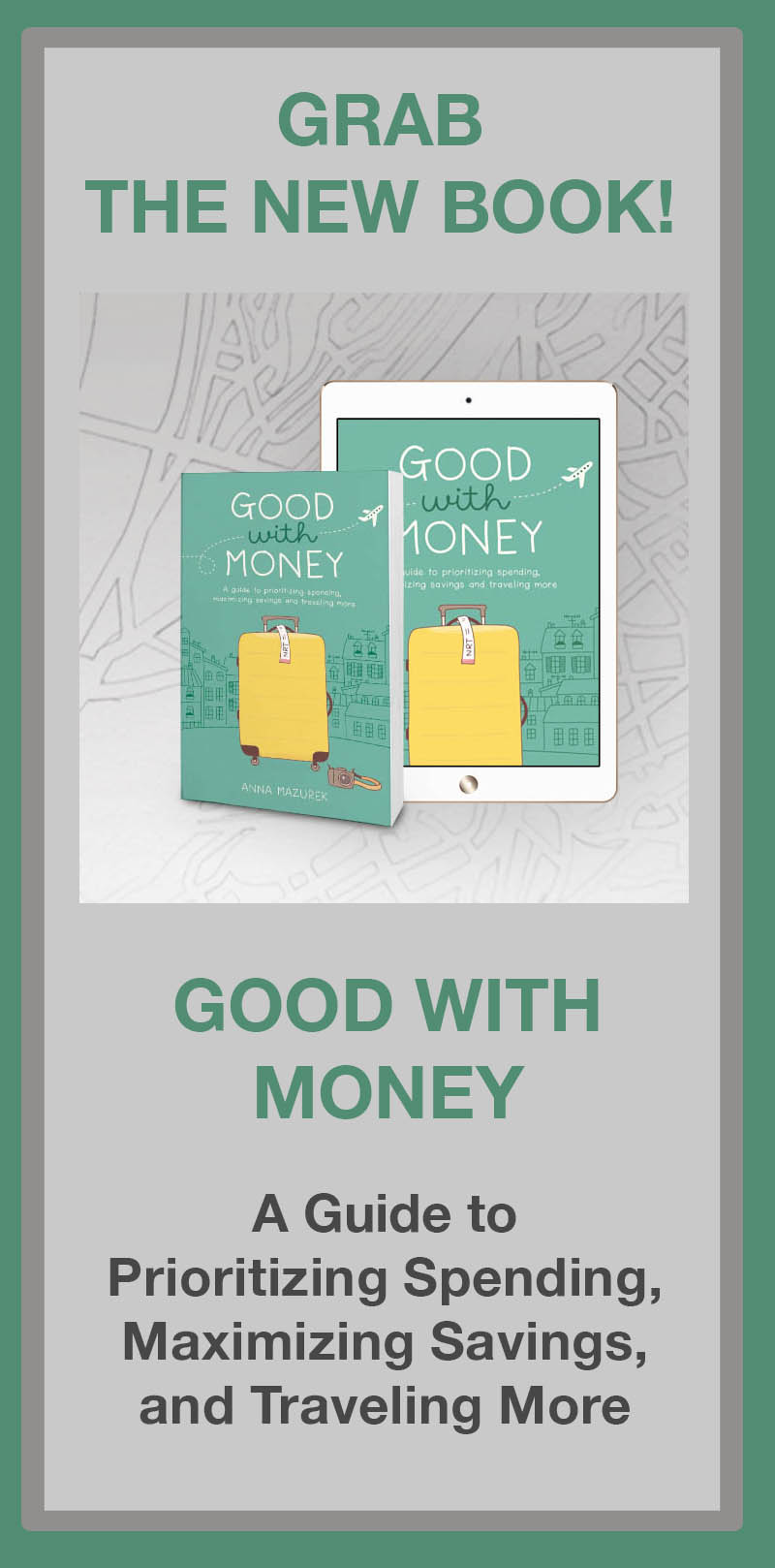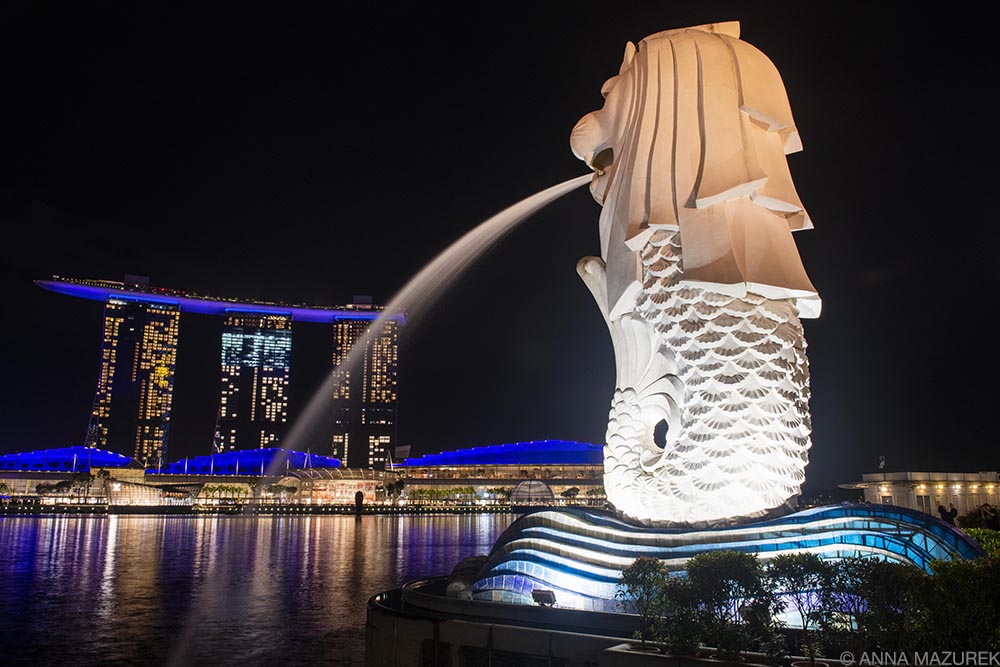 The iconic 8.6-meter Merlion statue is an icon of the Singapore skyline along with the Marina Bay Sands hotel across the bay.
The iconic 8.6-meter Merlion statue is an icon of the Singapore skyline along with the Marina Bay Sands hotel across the bay.
Why visit Singapore?
Singapore is a sleek tropical metropolis of high-rise buildings, shaded walkways and spotless public transport with elevators and escalators at each stop. It is essentially the New York City of Asia, except that it’s safer, cleaner and more efficient to explore than the Big Apple. Unlike NYC, every single train station has elevators and escalators to ALL platforms—a traveler’s dream! (Can you tell I have PTSD from dragging my suitcase up endless stairs in the NYC subway?) After a decade of visiting, I decided it was time to write my own post about things to do in Singapore.
Affiliate links are used in this post. If you make a purchase, I earn a small commission at no cost to you, which goes toward the cost of maintaining this blog.
Is Singapore a Country?
Yes, Singapore is a country and city-state in Southeast Asia. It declared independence from Malaysia on August 9, 1965.
The former British colony is a cultural melting pot with an ethnolinguistic population comprised of 75% Chinese followed by Malays and Indians. While the constitution lists four main languages (English, Malay, Tamil and Mandarin), everyone speaks English, and many locals speak two or more languages. This cultural fusion also means the food is top-notch. (Hello dim sum!)
One of the big surprises about this island nation is the amount of greenspace—47% of Singapore is parks and gardens. The public transport is efficient and affordable making exploration a breeze. Singapore is impeccably clean and extremely safe. It’s the only country in Southeast Asia where you can drink tap water!
While Singapore has a reputation for being expensive, there are plenty of ways to explore the city-state without draining your bank account. It also has the nicest airport in the world so it’s a great place for a short visit to break up a long journey!
I’ve been to Singapore over a dozen times in the last decade and visit at least once a year. (I was just there a few weeks ago!) Scroll down for my Singapore travel guide including a section on the best things to do in Singapore without breaking the bank.
Plan Your Trip
Currency: Singapore Dollar (SGD)
When to Go: Anytime. The climate is fairly consistent (hot with a chance of rain) but June and July are often the hottest months.
Travel Insurance: Protect yourself with SafetyWing travel medical insurance to cover accidents and travel delays.
Mobile eSIM Card: Get seamless connectivity worldwide with Airalo minus the hassle of physical SIM card.
The Best Free Things to do in Singapore on a Budget
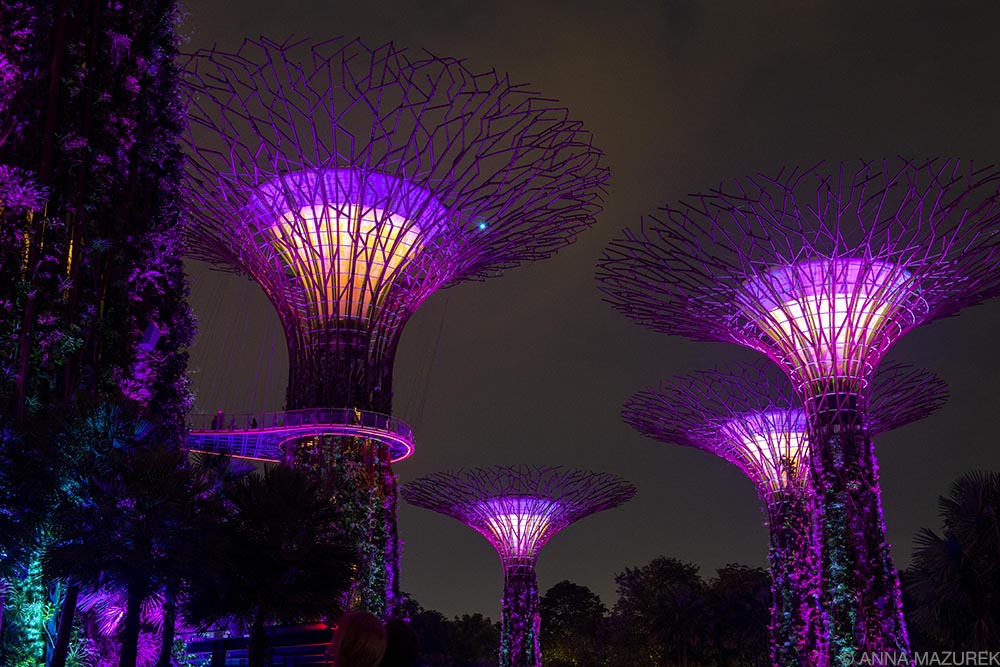 There’s a free light and sound show nightly in the Supertree Grove at Gardens by the Bay in Singapore.
There’s a free light and sound show nightly in the Supertree Grove at Gardens by the Bay in Singapore.
Merlion Park is home to the country’s unofficial mascot, an 8.6-meter-tall white statue of a Merlion, a creature with the head of a lion and the body of a fish, that doubles as a fountain. (Legend says an Indonesian prince came ashore and thought he saw a lion.) The name Singapore means “Lion City” in Sanskrit. It’s a great place to get photos of the skyline and Marina Bay Sands.
Gardens By the Bay is a must-visit green space comprised of three gardens and the famous Supertree Grove of metal tree-like structures that serve as vertical gardens. (While the gardens themselves are free, the two indoor gardens and the short walkway in the Supertree canopy are paid.) Stop by for one of the free sound and light shows, known as Garden Rhapsody, nightly at 7:45 and 8:45 p.m.
Marina Bay Sands is a three-towered hotel with a large cruise-ship-shaped structure spanning the top of the building, which looks like it belongs on the Vegas Strip. You can walk through the hotel at any time and most likely will have to in order to reach the Gardens by the Bay. It’s worth a splurge to have a drink on the rooftop bar for the view. There is also an attached mall.
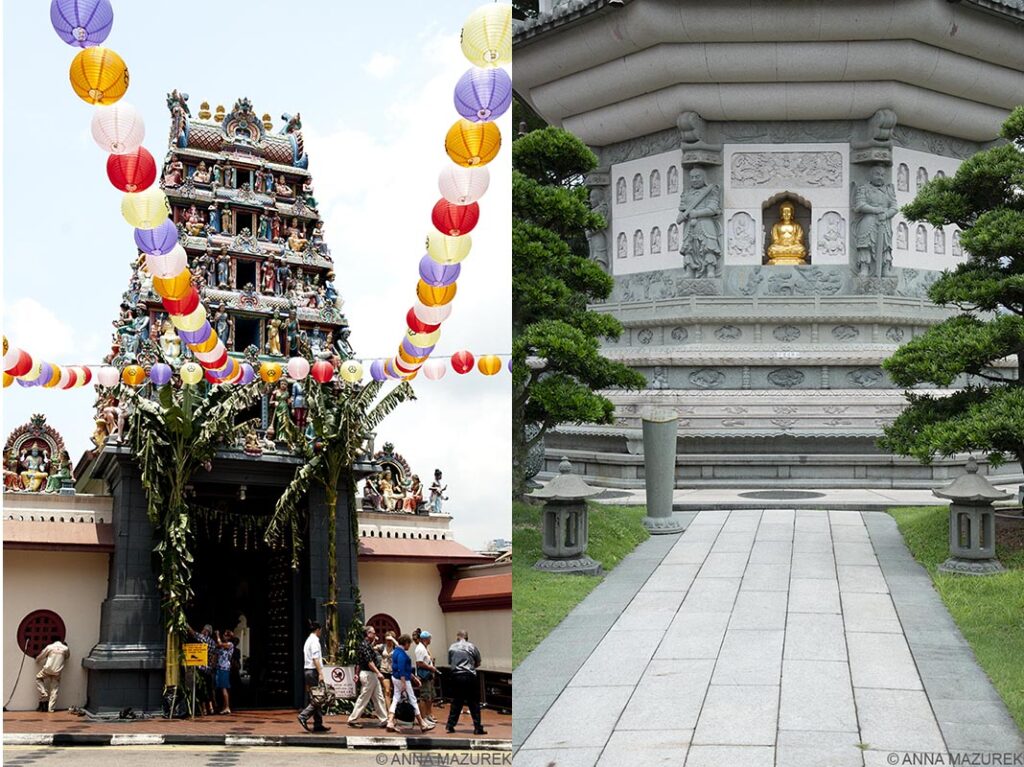 The colorful Hindu Sri Mariamman Temple, left, and teh Lian Shan Shuang Lin Monastery in Singapore are both free to visit.
The colorful Hindu Sri Mariamman Temple, left, and teh Lian Shan Shuang Lin Monastery in Singapore are both free to visit.
Stroll through Chinatown and stop at the photogenic Buddha Tooth Relic Temple and Museum and the colorful Sri Mariamman Temple, the country’s oldest Hindu temple built in 1872. The Lian Shan Shuang Lin Monastery is a beautiful Buddhist temple complex located away from downtown and the central tourist areas.
Haw Par Villa is a Buddhist hell park. Yes, you read that right. It’s a unique, interesting and slightly scary outdoor theme park with over a 1,000 statues. Admission is free.
Mustaffa is a six-story mall in Little India filled with literally everything imaginable. It’s an eye-opening experience to walk around the complex.
The Jewel at Changi Airport is home to the world’s largest indoor waterfall, the HSBC Rain Vortex. Located before airport security, The Jewel is a shopping mall portion of the airport connected by trains or walkways to the terminals.
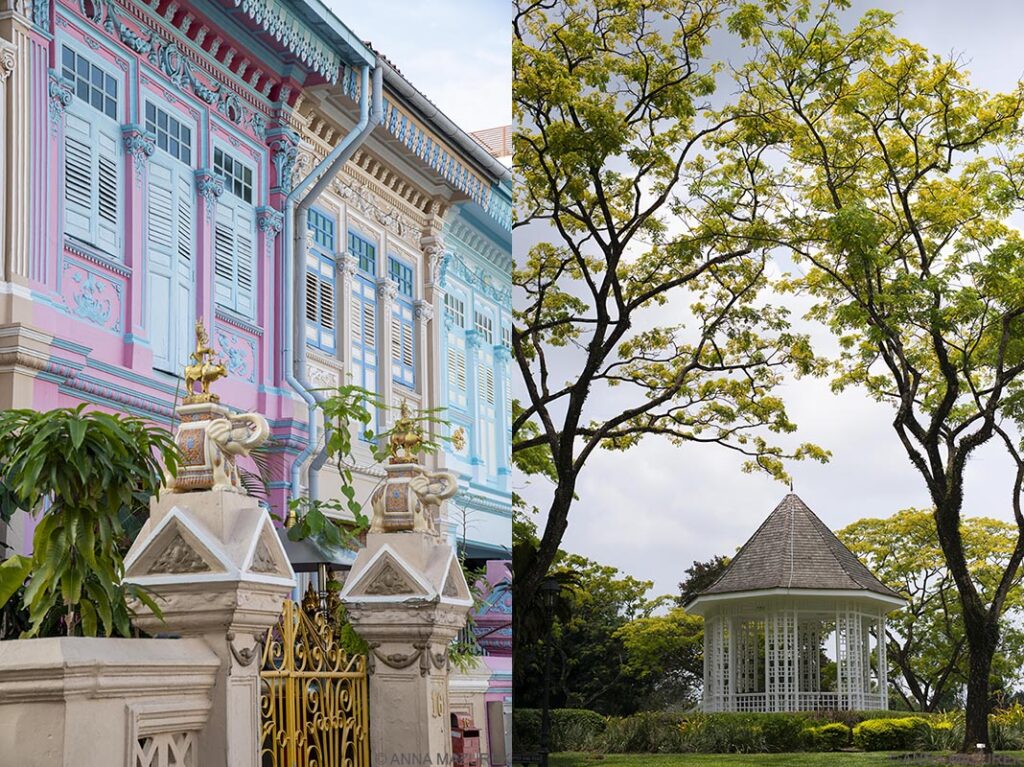 The Peranakan terrace houses on Jooh Chiat Road, left, and the Singapore Botanic Gardens, right, are two of the best photography spots in Singapore. Both are free to visit.
The Peranakan terrace houses on Jooh Chiat Road, left, and the Singapore Botanic Gardens, right, are two of the best photography spots in Singapore. Both are free to visit.
The Peranakan terrace houses on Joo Chiat Road are a series of colorful historic shophouses. (The term “Peranakan” is often used to refer to someone with both Chinese and Malay origins.) These homes are privately owned and not open to the public. For the best photos, visit in the morning. (Set your Google Maps to 19 Koon Seng Road or 287 Joo Chiat Road, which are both in the same block.)
Singapore Botanic Gardens is a UNESCO World Heritage site that’s home to the National Orchid Garden. (I got dragged here by a South African boy I had a crush on back in 2013 who loved orchids and was surprised at how lovely it was!)
Haji Lane is one of the country’s narrowest and most colorful streets filled with shops and restaurants. It’s a great photo spot.
The Best Parks, Walks and Nature Reserves in Singapore
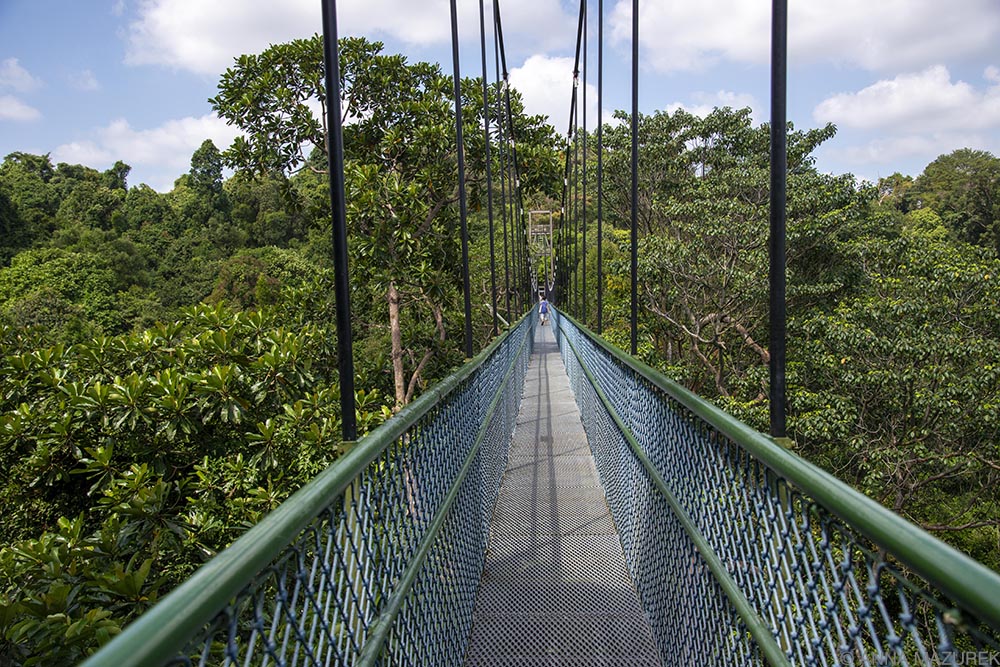 The TreeTop walk at MacRitchie Reservior is located in Central Catchment Nature Reserve, one of Singapore’s four nature reserves.
The TreeTop walk at MacRitchie Reservior is located in Central Catchment Nature Reserve, one of Singapore’s four nature reserves.
I love walking through Singapore’s plethora of parks and nature trails. (Over 47% of the island is green space!) Set out early to beat the heat. All of these trails are easily accessible from public transport.
Central Catchment Nature Reserve is home to the MacRitchie Reservoir, the largest in Singapore, and home of the famous Treetop Walk featuring a 25-meter suspension bridge and over 20 kilometers of trails.
The Southern Ridges is a 10-kilometer trail with a series of bridges including Henderson Waves, the highest bridge in the country and a series of bridges making up the forest and canopy walk. It’s best to start the trail at the Harbour Front MRT station so the final portion is downhill. Here is a map.
Fort Canning Park was home to the country’s first rulers due to its hill-top location. It later became the site of the British Government, a fort and the first botanic garden. Take a self-guided walk of the main attractions including nine historical gardens, sculptures and a Fort Gate, the only remains of the colonial fort. Instagramers will love the Fort Canning Tree Tunnel—be prepared to line up if you want a shot.
Since there are 350 parks and even more greenspaces, I can’t name them all. A few other notable ones are Labrador Nature Reserve and Bukit Timah Nature Reserve. Both are free and easily accessible by public transport. For more details on parks, visit https://www.nparks.gov.sg.
The Best Beaches in Singapore
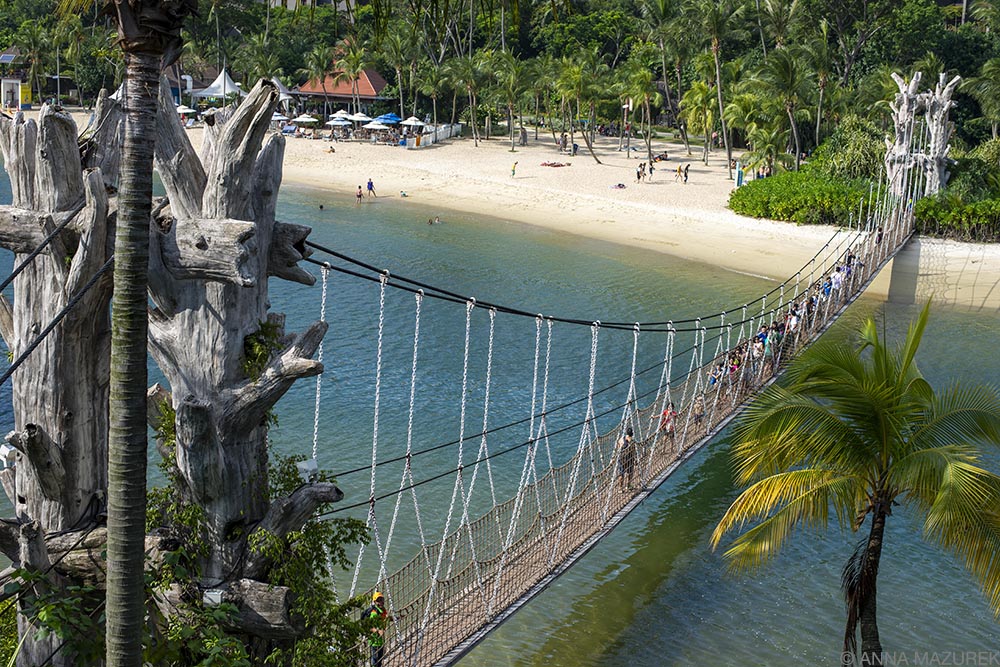 Sentosa Island is Singapore’s more popular beach destination with three man-made beaches (Siloso Beach, Palawan Beach, and Tanjong Beach).
Sentosa Island is Singapore’s more popular beach destination with three man-made beaches (Siloso Beach, Palawan Beach, and Tanjong Beach).
Fun fact: The majority of the beaches in Singapore are manmade. One of the most popular beach destinations is the island resort of Sentosa, which is home to Universal Studios and the aquarium. For those looking to avoid Sentosa, the next best option is Changi Beach, a narrow strip of white sand in Eastern Singapore that doubles as a park with running and cycling lanes.
The Best Museums in Singapore
Singapore has some excellent museums, but they are not free for foreigners except on special occasions during festivals and large events. I particularly enjoyed the Peranakan Museum, which digs into the culture of Southeast Asia’s Peranakan communities. I really think it’s a must-visit in terms of understanding the culture. The National Museum of Singapore, founded in 1849, is another great spot. (FYI: I don’t like zoos or theme parks, so you’ll never see those in one of my blog posts. Singapore has both.)
Where to Stay in Singapore
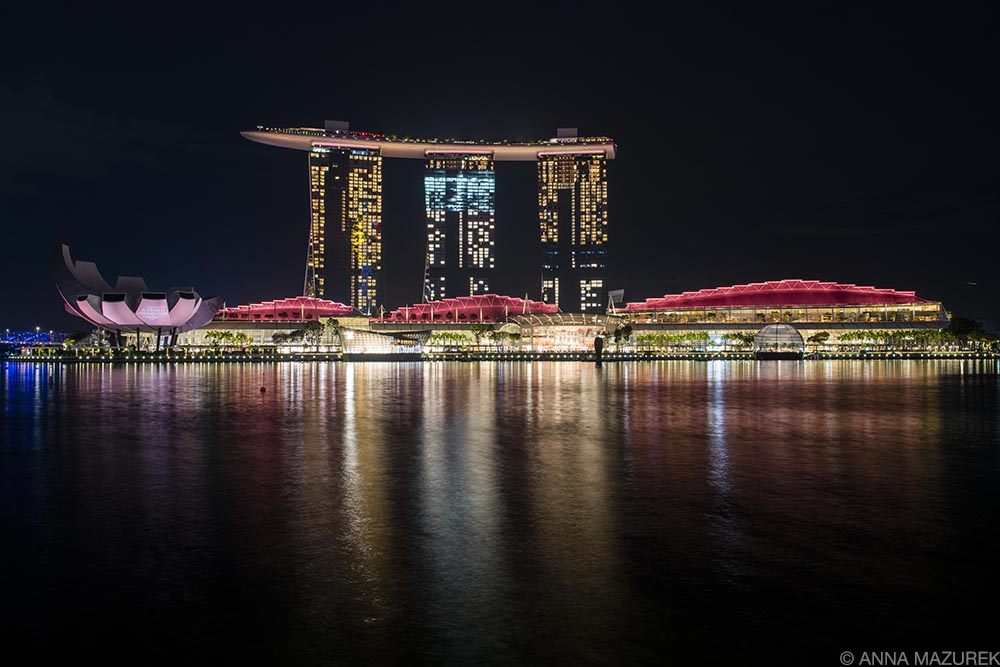
There is a free nightly light, water and sound show outside Marina Bay Sands that lasts 15 minutes. Shows are at 8 p.m. & 9 p.m. daily with an additional show at 10 p.m. on Friday and Saturday. Check out details here.
Accommodation is where Singapore gets expensive. The cheapest areas are Little India, Chinatown and Joo Chiat. Hostels will run around $30-40 SGD ($22-29/USD) and hotels will start around $200 SGD ($148 USD). I’ve most often stayed with friends, and the hostels I’ve tried haven’t been not worthy of mentioning.
For Singapore hotels, I really like 30 Bencoolen—it’s a modern, safe and clean hotel just steps from the Bencoolen MRT. (Plus, it has a pool, gym and laundry machines.) I really love the location of 30 Bencoolen because it’s only a 20–30-minute walk to Chinatown or downtown.
If you’re looking to splurge or cash in points for a luxury stay, then the most iconic hotels are Raffles Singapore, Fullerton Bay Hotel and Marina Bay Sands.
The Best Places to Eat in Singapore
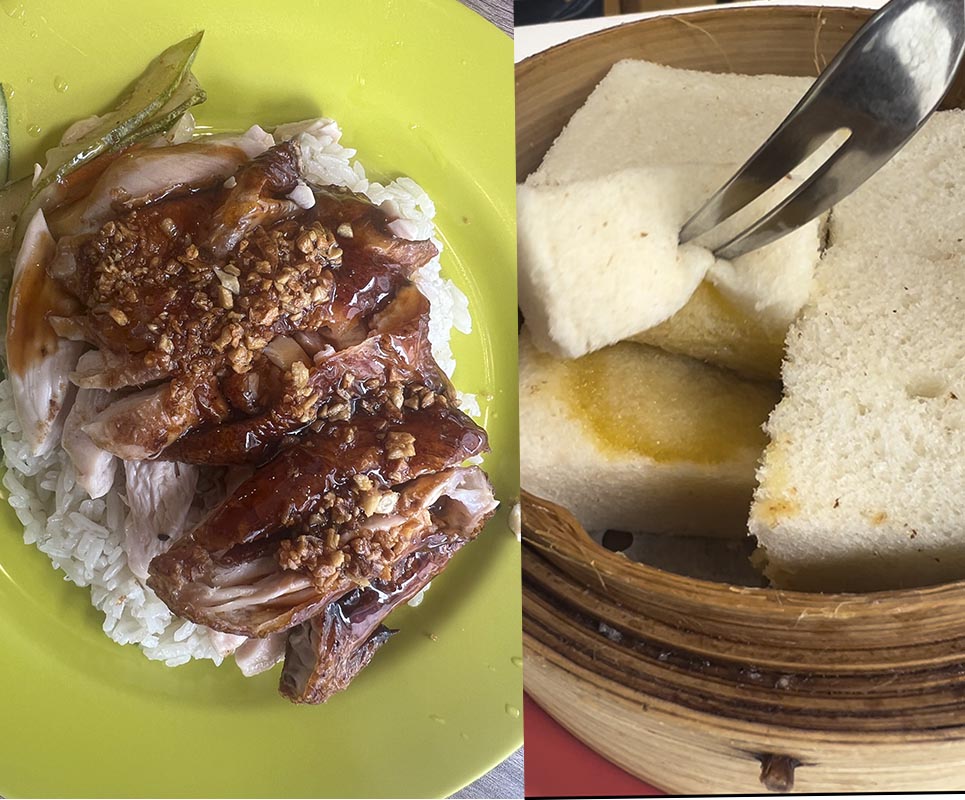 Chicken rice, left, and kaya toast, right, are must-try Singaporean classics.
Chicken rice, left, and kaya toast, right, are must-try Singaporean classics.
The cheapest places to eat in Singapore are hawker centers, a mixture of a community center and a food court wrapped into one. Classic Singapore dishes available at most hawker centers include Hainanese chicken rice (poached chicken with seasoned rice), kaya toast (toast with kaya, a coconut jam made with pandan), carrot cake (a radish omelet fried with garlic and no carrots), Laksa (spice noodle soup usually made with seafood).
Here are my favorite spots to eat in Singapore:
- Ya Yun Kaya Toast serves up a steamed rendition of a Singaporean classic—kaya toast—and other breakfast treats.
- Swee Choon Tim Sum Restaurant is my favorite dim sum spot. It’s huge, but there’s always a line that moves quickly. Cash only.
- Tiong Bahru Bakery is a French-style bakery for breakfast and lunch specializing in homemade croissants. Their granola is also tasty. There are multiple locations, but I really like the patio at the Fort Canning Park location.
- Tim Ho Wan is a Hong Kong chain, but their barbecue pork bao is some of the best. Skip the long line to eat inside and order from the to-go window.
- Chinatown Complex Food Center and the Maxwell Food Center are two well-known hawker centers in the Chinatown area.
The Best Craft Beer Bars in Singapore
Singapore has a bustling craft beer scene. Alcohol is not cheap in Singapore so seek out Happy Hours for a good discount. Beer is normally $16+ SGD ($12 USD) outside of happy hour. Consider buying any booze you’d like, including craft beer, from duty free at the airport. Here are my favorite spots to grab a pint:
- The Beer People Co. is a fairly new watering hole that has over 150+ bottles and cans of craft beer with a large selection of both local and Asian beers. They have happy hour and also serve up Thai food. It’s currently my favorite spot!
- Smith Street Taps is a 20-tap craft beer stall in the Chinatown Complex Food Center. It’s on the second floor of the open-air hawker center and feels like you’re drinking beer in a parking garage with a dive bar vibe that I love. It’s a must-visit opened by two of the countries craft beer pioneers.
- Tap has the cheapest craft beer in town with a $7-8 USD price range on 20 different taps. They serve food and have three locations.
- Druggists is a hip bar and eatery with a good variety of craft beer but a bit more pricey than the other locations mentioned.
Singapore FAQ
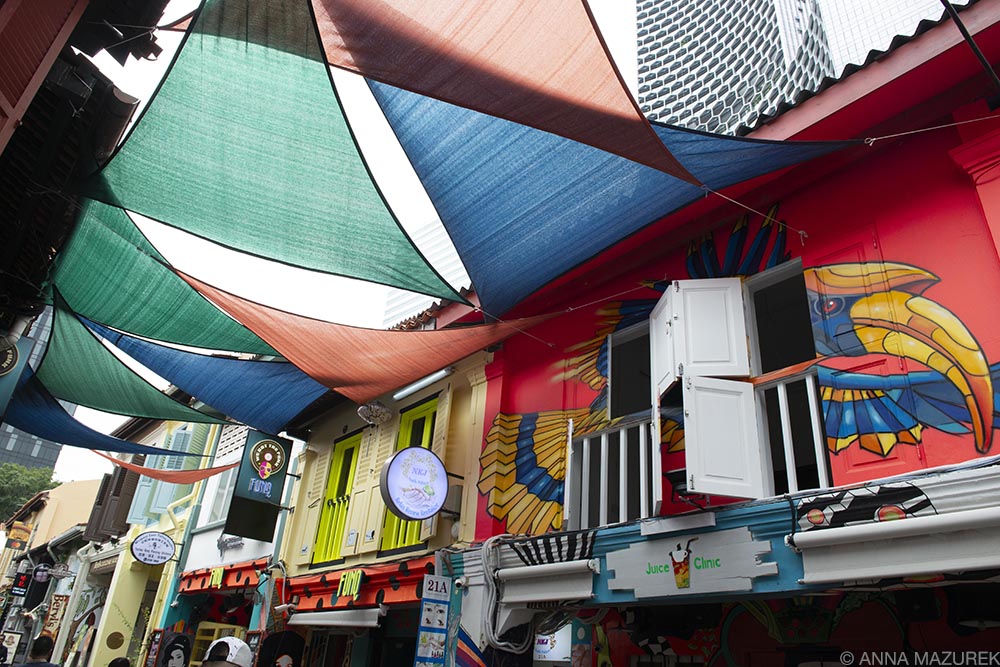 Colorful Haji Lane is a great shopping and dining hotspot in Singapore. It’s all next to the Sultan Mosque that’s open to visitors.
Colorful Haji Lane is a great shopping and dining hotspot in Singapore. It’s all next to the Sultan Mosque that’s open to visitors.
Do you need travel medical insurance for Singapore?
Yes, travel medical insurance is one of the most important things to purchase for any trip abroad. It covers all the things that could go wrong from injuries to travel delays so that you don’t have to worry and can focus on traveling!
I use SafetyWing’s Nomad Insurance, travel medical insurance coverage (with no deductible) for over 180 countries for people aged 69 and under when traveling outside their home country. The best part is that it only costs a few dollars a day! If you get sick or injured abroad, you can visit any hospital or doctor.
Other benefits of Nomad Insurance include coverage for lost checked luggage, travel delays over 12 hours, motor accidents (if properly licensed, wearing all safety equipment and not intoxicated) and injuries from sports or leisure activities. You can even add adventure sports, electronics theft and U.S. coverage (for non-residents) to your policy.
Does Singapore have public transport?
Singapore has an excellent public transport network of underground trains (MRT) and buses. You can get anywhere in the city in roughly 30 minutes, except the airport or the far west of the island. MRT fare is $1-3 USD a ride. (It cost me $2 USD from the airport to the Bencoolen MRT stop.) Simply use a contactless bank card to tap and go to avoid standing in queues. You can also buy passes.
Does Singapore have Uber?
No, there are taxis and Grab, the dominant rideshare company in Southeast Asia that works the same as Uber.
What is the cheapest place to get a SIM card in Singapore?
Avoid buying an overpriced SIM card at the Singapore airport, which ranges from $30-50 SGD ($22-37 USD!!!). Consider buying an e-sim from Airalo that will work instantly upon arrival. If your phone doesn’t have eSIM, then go into a 7-Eleven in town and buy one at a fraction of the cost ($14 SGD/$10 USD). Yes, e-SIM cards will work in Singapore, but you’ll likely have to buy a regional package through Airalo instead of an individual country.
For more, check out my guide to the Pros & Cons of eSIM cards!
How many days do you need in Singapore?
Give yourself two days to explore the marina and Chinatown and another if you want to visit any of the greenspaces. It’s easy to fill up a week if your budget can afford it. Singapore’s Changi Airport is the nicest airport in the world, so it’s a great stopover point to break up a long journey!
Is chewing gum illegal in Singapore?
Yes, chewing gum is banned in Singapore. Why? When the public trains system was first implemented, kids were putting gum on the door sensors which made the trains inoperable, which led the government to outlaw gum among other cleanliness concerns. While this might seem like an extreme reaction, it means the sidewalks are SPOTLESS—no nasty gum splotches anywhere. I think it’s the cleanest city in the world. Check out this BBC story for more details.
Does Singapore have strict laws?
When you land in Singapore, the pilot makes an announcement and says the penalty for drug trafficking can be death. Just don’t break their laws—which are standard worldwide laws because you should NOT be doing illegal things anyways—and you’ll be fine. To avoid fines, avoid littering, jaywalking, spitting and urinating in public.
Can you drink alcohol in public in Singapore?
Yes, you can drink alcohol in public places depending on the time. Drinking alcohol in public in Singapore is not allowed between 10:30 p.m. and 7 a.m. after a riot in Little India in 2013. There are additional restrictions in specific parts of town on weekends. For more details, check out this news story.

